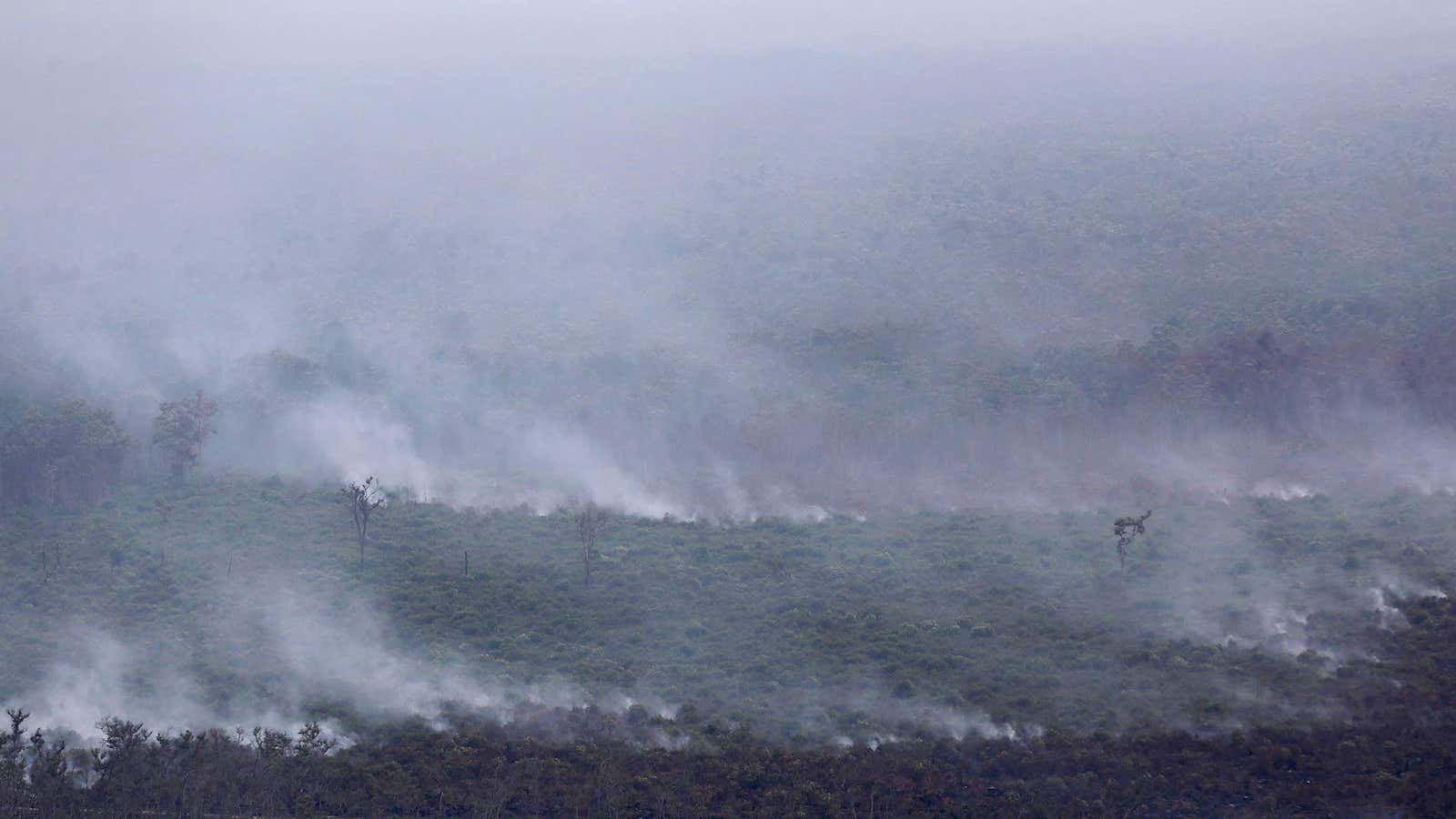This week Indonesian president Joko Widodo warned that forest fires are once again starting to appear in the country, and called upon citizens to avoid a repeat of last year’s haze crisis, described by some as a “crime against humanity.” During that months-long disaster, large areas of Southeast Asia were smothered in toxic smoke, forcing school closures, flight cancellations, and respiratory problems (even deaths in some cases). The haze was caused by fires sparked to cheaply clear land for agricultural uses, especially palm oil.
Widodo has good reason to send out the appeal. According to Rodrigo Chaves, a country director for the World Bank, the fires cost Indonesia at least $16 billion in economic losses, equivalent to 1.9% of the country’s GDP. Chaves shared the figures at a recent media briefing in Jakarta. The numbers were also highlighted in a World Bank economic study of Indonesia (pdf, page ii) released last month. He said the amount takes into account the impact on agriculture, tourism, forestry, trade, and transport over five months.
The cost is over twice as much as the nearly $7 billion that went into Indonesia’s reconstruction efforts after the 2004 tsunami, according to the World Bank. That natural disaster killed an estimated 230,000 people in 14 countries. In Indonesia’s Aceh province alone, 221,000 were killed or went missing. It was one of the worst natural disasters in recorded history.
The fires, by contrast, are a manmade disaster repeated every year. Their impact was particularly bad last year due to dry conditions created by the El Niño weather pattern. According to the World Bank, more than 100,000 manmade fires burned 2.6 million hectares of land between June and October 2015. Sometimes oil palms were planted before the smoke even cleared, and in one instance it happened right outside an orangutan sanctuary, sparking outrage.
The most dangerous haze comes from the burning of peatland—basically young coal, and just as toxic. Fires on such land burn below the surface and are extremely difficult to extinguish. They can smolder for weeks even after being hit with water.
Widodo said on Monday (Jan. 18) that permits should no longer be issued for cultivation on peatland areas. He also announced the establishment of the peatland restoration agency.




